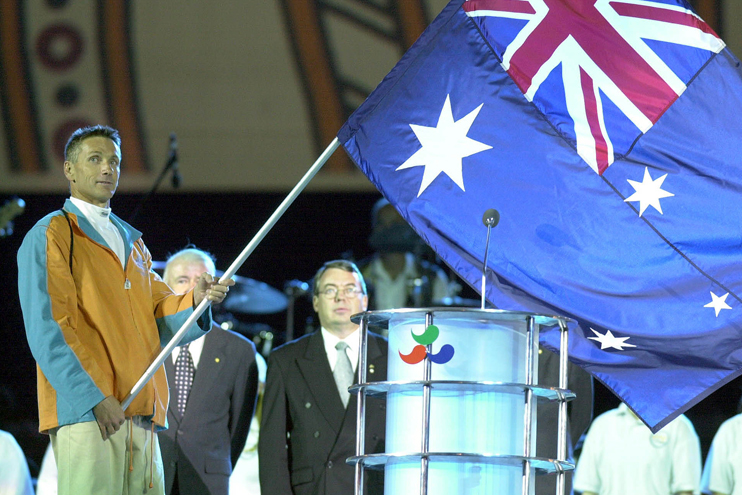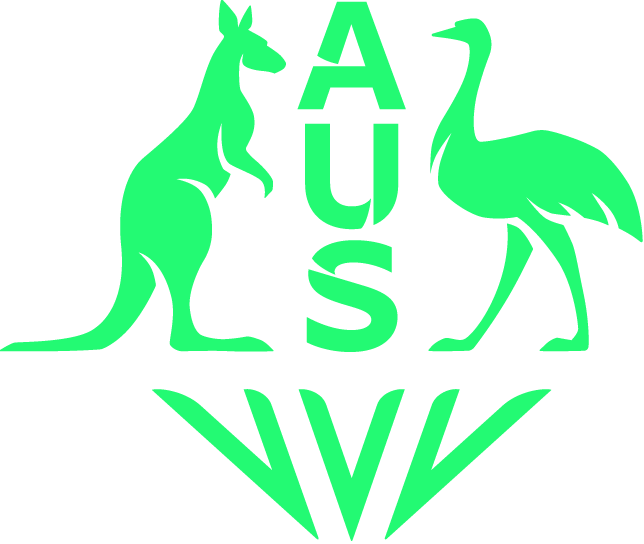
The Sydney 2000 Paralympics was a watershed moment for the Paralympic movement and for Para-sport in general according to 1994 Commonwealth Games team member and Sydney 2000 flag bearer Brendan Burkett.
Up until the Sydney Games, the Paralympics and Summer Olympics had always been largely held independently from each other, however, the Games in Sydney marked the first time that Paralympians would receive the same treatment as their Olympics counterparts, living in the same village and largely competing in the same venues.
The celebration of the Games in Sydney also saw the culmination of a 40-year journey to integration of Para-sport through the Commonwealth Games movement in Australia.
Between 1962 and 1974, four Commonwealth Paraplegic Games were held immediately before or after the British Empire and Commonwealth Games, an initiative of Australian surgeon and director of the Spinal Unit of Royal Perth Hospital, Sir George Bedbrook.
The driving force behind the Paralympic movement in Australia, Bedbrook was encouraged to organise Para-sport in Australia, and by 1959 the Paraplegic Association of WA began to promote the 1962 Commonwealth Paraplegic Games.
93 athletes from nine nations competed at the 1962 Commonwealth Paraplegic Games in Perth, with Australia topping the medal table with 38 gold.
Sports included on the program were archery, athletics, basketball, fencing, pentathlon, snooker, swimming, table tennis, weightlifting, and dartchery, a combination sport between darts and archery where bows and arrows are shot towards a dart scoring board with darts scoring of reducing from 301 with three arrows per attempt.

John Martin (left) shakes hands with his partner John (“Jim”) Newton after they defeated the team from Jamaica by two points in the final of the Dartchery competition at the 1966 Commonwealth Paraplegic Games in Kingston, Jamaica. (Image: John Martin / Paralympics Australia)
With competitor numbers nearly doubling by the 1970 Commonwealth Paraplegic Games in Edinburgh, Scotland, by the 1980s there was growing support for the inclusion of Para-sport in the major multi-sport Games.
The support for inclusion of Para-sport athletes reached a significant milestone at the 1994 Commonwealth Games in Victoria, Canada, when the sports of Para-athletics, Para-lawn bowls and Para-swimming were including on the sport programme as exhibition events.
Australia was represented at the Games by six Para-athletes, wheelchair marathon gold medallist and 800m bronze medallist Paul Wiggins, visually impaired lawn bowls men’s singles silver medal winner John Hubbard, lawn bowls women’s singles competitor June Goodhand, women’s 100m freestyle S9 gold medallist Melissa Carlton, women’s 100m freestyle S9 bronze medallist Kelly Barnes, men’s 100m freestyle S9 swimmer Adam Wood and men’s 100m freestyle S9 silver medallist Burkett.

Australian Para-athletes at the Victoria 1994 Opening Ceremony. (CGA Archive)
Burkett headed into the Games in Victoria, as one of Australia’s most decorated para-sport athletes after competing at the Seoul 1988 and the Barcelona 1994 Paralympics, but the Games in Canada took place during an important moment in Australia’s sporting history.
“In 1993, Australia had been awarded the Olympics and Paralympics in Sydney, and there was a lot of positive energy and excitement for the Games in 2000 and for sport across the country,” Burkett said.
“Sports like cricket, netball, rugby… across the board, the country was going really well.
“Part of that momentum included the Commonwealth Games in 1994, which was going to be the first with athletes with a disability… and to compete in those Games was just mind-blowing to be able to compete alongside the able-bodied athletes.”
Burkett would go on to win a silver medal in the men’s 100m freestyle S9 event at the Games in 1994, and months later when he was team manager of the Australian team at the International Paralympic Committee World Swimming Championship, Burkett spoke about the importance of the moment and the opportunities for para athletes in the future.
“Just being a part of the Australian swimming team was a real buzz,” Burkett told The Canberra Times in September 1994.
“Be you abled or disabled, everyone needs competition.
“These [integrated competitions] are great because they give some promotion to the sport so everyone can see disabled athletes swimming, and if someone does come along who is disabled they know there are avenues where they can compete.”
Burkett captured the sentiment in the mid-1990s, a sentiment which continued to gain momentum towards the watershed moment of the Sydney 2000 Paralympic Games.
For the champion swimmer, the Games in 2000 signalled the end of his illustrious career, a career which was honoured with him being chosen as Australia’s flag bearer at the Opening Ceremony, a moment the humble Burkett remembers on fondly 20 years later.

Commonwealth Games silver medallist Brendan Burkett as flag bearer for the Sydney 2000 Opening Ceremony. (Paralympics Australia)
“It was a really lucky honour,” Burkett said.
“Firstly, to make the team, and then to carry the flag at the Opening Ceremony was a feeling of great excitement.”
The Games turned out to be the biggest ever recorded with 3,879 athletes from 122 countries coming together to put on a remarkable spectacle that saw more than 300 world and Paralympic records broken in front of packed stadiums.
However the Games also established a new standard for how Olympic and Paralympic Games organising committees in the future should hold the multi-sport events, standards that Burkett believes are still the benchmark today.
“A lot of the procedures and policies the organising committee established back in 2000, have become the legacy of the Games today, whether it is a stronger handover between the Olympics to Paralympics, or the way athletes are considered,” Burkett said.
“Just as an athlete to be a part of those Games… I still get goosebumps thinking about it today.”
Sport Australia Hall of Fame legend and nine-time Paralympic gold medallist Louise Sauvage echoes the sentiment of Burkett, and believes the Games were a big turning point for the Paralympics and the para sport movement.
“I think having the Games in Sydney was a big turning point for Paralympics in general and it’s gotten bigger and better and progressed from there. The momentum is being carried forward,” Sauvage said on her elevation to Sport Australia Hall of Fame legend status in 2019.
Sauvage would go on to win the silver medal in the women’s 800m wheelchair event at the Manchester 2002 Commonwealth Games in front of another capacity and engaged crowd, another legacy of the Games in Sydney.
“In the past we got lost in the four years between Games, but it seems to have now maintained a presence and the more coverage you get the more people want to see it and get involved,” Sauvage continued.
“It’s now just seen as another sport that people really enjoy seeing. It’s just been phenomenal that it’s come so far, and I’m really honoured and proud to have been part of that history.”
The packed stadiums were equalled by the media coverage that the Sydney Paralympic Games received with over 2,300 media representatives on-site to cover the Games. And those who couldn’t make it in person could watch it all unfold via a webcast, which received more than 300 million hits across the competition.
“I had international athletes coming up to me saying we’re on the front page of the paper and on the news every night. It was just unheard of. And I was so excited that people were educated and they came to the Games,” Sauvage said.
“The basketball games, the rugby games, they were packed, it was sold out, it was fantastic. It was just so unheard of at the time. It was fantastic that we’ve made that shift and it was great that Australia did that.”
For Burkett, the legacy of the Sydney Games on the parasport movement has continued to grow and evolve over the past two decades, evident in the Commonwealth Games on the Gold Coast 2018 which included the biggest para sport programme in Commonwealth Games history to date, where Australian para athletes won 16 gold medals of the nation’s total of 80.
“You have seen that continued success [of Para-sport] just look at two years ago on the Gold Coast 2018 Commonwealth Games,” Burkett said.
“The para-athletes there were outstanding again, and the whole para-sport movement is continuing to move in the right direction, and you know I think it is key, not only for Australians, but for everyone around the world who enjoys sport to see para-athletes and see what a human being can truly achieve.
“And sport allows para-athletes to get on those worldwide stages and really push the limits.”
Sydney 2000 laid the foundation for what the future of the Paralympics would become. The then record breaking Games of 2000 have since been topped by three of the next four, with Rio 2016 now holding the record for the biggest Paralympics ever, topping 4,342 athletes.
Birmingham 2022 is set for the largest-ever female and Para-sport programme in Commonwealth Games history with women’s T20 cricket, beach volleyball and Para-table tennis joining the existing sports including aquatics (swimming, Para-swimming and diving), athletics and Para-athletics, badminton, basketball 3×3 and wheelchair basketball 3×3, boxing, cycling (mountain, road, track and Para-track), gymnastics (artistic and rhythmic), hockey, judo, lawn bowls and Para-bowls, netball, rugby sevens, squash, table tennis, triathlon and Para-triathlon, weightlifting and Para-powerlifting and wrestling.
But on October 18th, Burkett will reflect on the anniversary of the opening of the Sydney 2000 Paralympics, and celebrate the progress and the evolution of Para-sport he and his fellow team members have made over the past 20 years.


